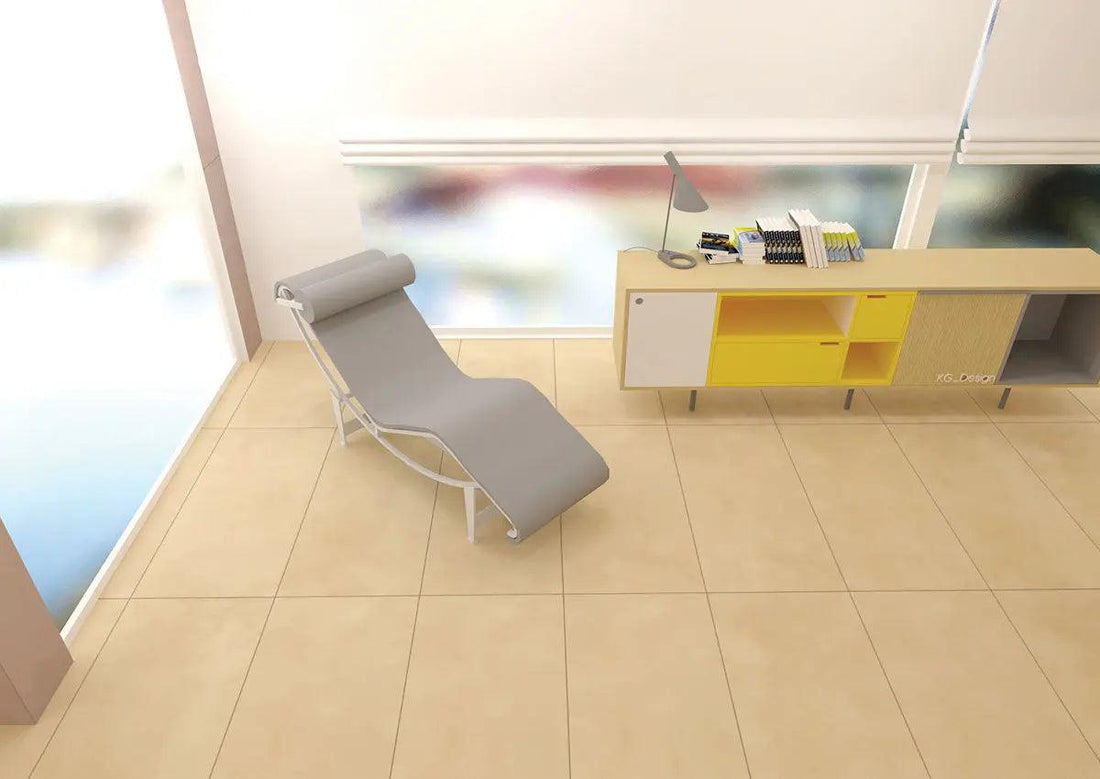Beyond the Surface: Discover the Unbeatable Strength of Full-Body Tiles
by Shivam Tayal 18 Feb 2025 0 Comments
Introduction to Full-Body Finish on Tiles
- The full-body finish on tiles is considered one of the most advanced and groundbreaking innovations in the field of modern tile manufacturing as it is known for its remarkable durability, consistency throughout the structure and its resistance to wear and tear
- Full-body has earned its reputation as an ideal choice for places which demand both functionality and aesthetic supremacy
- The main difference between full body tile and any other finish is that unlike other finishes, where colour, texture, and pattern is applied to the uppermost layer in this case there is a uniform pigmentation throughout the tile.
- This remarkable characteristic makes them largely unaffected to chipping, scratching or surface damage because the design patterns run throughout the body of the tile.
- This feature is one of the main reasons of its popularity in high-foot-traffic areas like commercial areas, industrial facilities and outdoor environments
- This type of tile is made up of high-grade porcelain as it undergoes some intense manufacturing processes like extreme heat and pressure which results ina dense, hard-wearing and non-porous structure.
- Their extremely low water absorption rate makes them ideal for areas such as bathrooms, kitchens and swimming pools
- Earlier full-body tiles were limited to only solid colours and simple design patterns, but advancements in digital printing technology have allowed the manufacturers to create stone, wood and marble-like designs on the tile
- Their resistance to stains, scratches, heavy loads, and thermal stress has further solidified their position as a premium choice in both interior and exterior design applications.
History and Evolution of Full-Body Tiles
- The creation of this type of tile is due to the growing demand for durable and versatile flooring solutions in the late 20th century.
- Tile manufacturers were solely invested in surface glazes to add different colours, textures and patterns on the same clay bases, but this delivered tiles which were aesthetically pleasing but lacked durability in high foot traffic or heavy-duty areas.
- Chips, cracks and scratches revealed the plain clay body underneath which undermined its visual appeal
- As a response to this limitation, tile manufacturers began experimenting with colouring techniques throughout the body, by blending the pigmentation and patterns were blended into the raw materials before pressing and baking the tile.
- Italy, a global leader in the tiling industry played an important role in refining this technology and creating a benchmark for high-quality full-body tiles.
- As digital printing technology advanced, the manufacturers are able to create stone, wood and marble-like designs on the tile, which not only expanded the design possibilities but also allowed for mass production without compromising its quality
- As time passed the full-body tiles have made their way from being primarily used in industrial settings to becoming a staple in luxury residential projects.
Applications of Full-Body Finish Tiles
- The application of full-body tiles is quite broad, spanning residential commercial, industrial and outdoor spaces
- These tiles are mostly used in residential interiors for areas such as kitchens, living rooms, bathrooms and hallways, areas where durability, scratch and moisture resistance are of utmost importance.
- Their ability to withstand heavy foot traffic and accidental impacts makes sure that they remain in pristine condition even in busy households.
- They are very popular as backsplash and flooring in kitchen areas, thanks to their stain resistance and easy-to-clean surface.
- Full-body tiles are widely used for commercial spaces in areas like airports, shopping malls and office buildings, where resistance to heavy loads, heavy foot traffic and exposure to chemicals makes them a cost-effective and durable flooring option.
- Full body tiles were primarily used in industrial areas like warehouses, factories, and heavy-duty workspaces due to their heavy load-bearing capacity.
-
Their uniform structure and durable surface ensure that they remain functional and visually appealing even under extreme operational conditions.
Installation process of Full-Body tile
- Proper installation of full-body finish surface tiles is important for longevity and functionality
- The first step is the preparation of the surface which includes cleaning and levelling of the surface to remove any debris or unevenness as it helps in preventing any cracks or loosening of tiles
- Adhesive selection is the next important, cement-based adhesives are usually preferred for matt tiles as they offer strong bonding properties and resilience to moisture
- For a uniform pattern, tiles were carefully placed and aligned
- After that, a high-quality grout is applied which is a very important step as it adds structural stability and improves the aesthetics of the tile
- Applying a sealing layer is recommended to increase stain and moisture resistance, especially in areas like bathrooms and kitchens.
- This makes sure that the tiles are not just visually appealing but can also withstand heavy foot traffic with ease.




